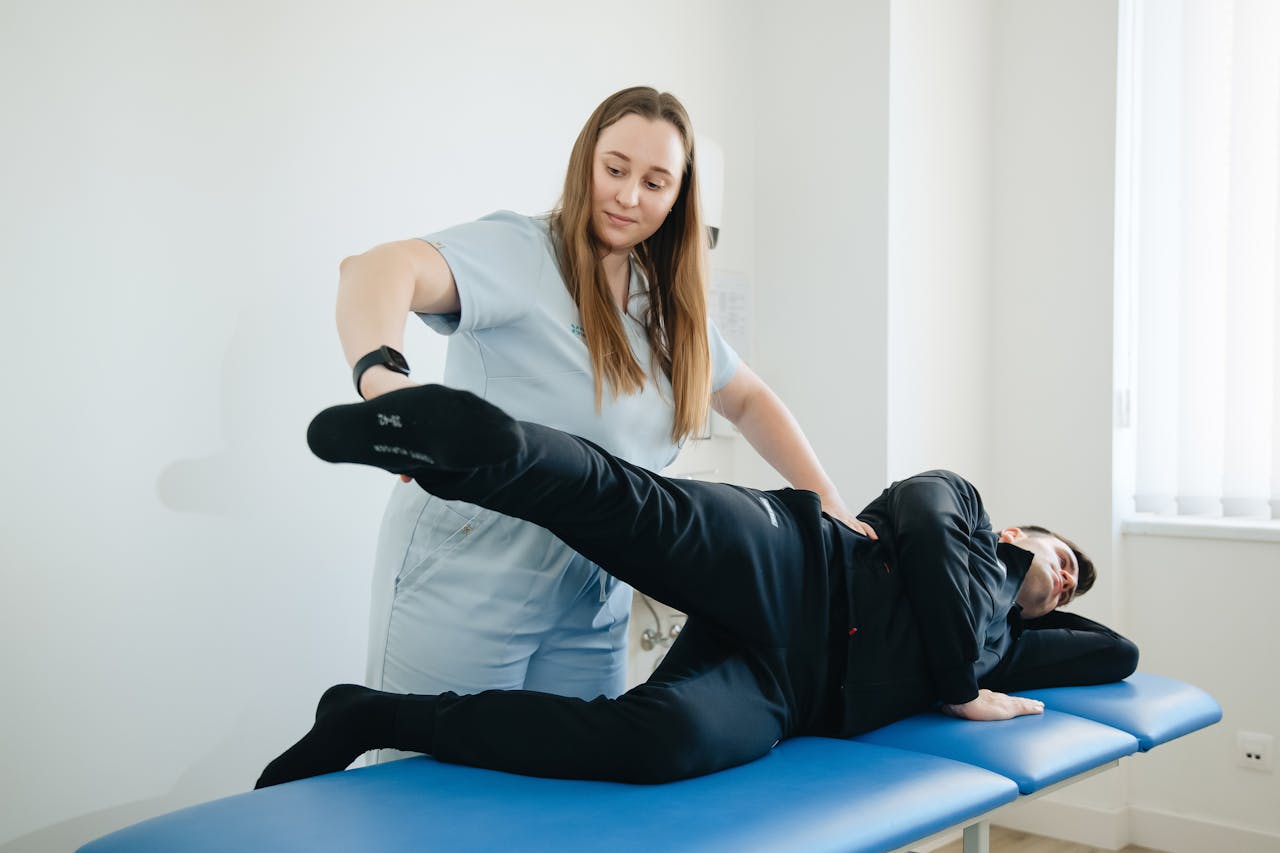Struggling with back pain but unsure whether to rest, stretch, or see a specialist? This guide offers quick, expert-backed advice for self-care and clearly marks red flags that require urgent medical attention.
Immediate Relief: What You Can Do at Home
Quick Actions to Reduce Pain and Inflammation:
- Apply Heat or Cold Therapy
Use a warm compress, bath, or ice pack. Heat soothes tight muscles and improves circulation, while cold reduces inflammation and numbs sharp pain. - Use Over-the-Counter Pain Relievers
Ibuprofen or acetaminophen may help with mild to moderate pain—if safe for you. - Modify Activities & Take Breaks
Avoid movements that trigger pain. Short, frequent rest helps healing without complete inactivity.
Movement & Posture Tips That Work
Gentle Exercises to Keep You Mobile and Aligned:
- Knee-to-Chest Stretch
Hold 15–30 seconds, 2–3x per leg to improve hip and lower back flexibility. - Lower Back Rotational Stretch
Hold 15–30 seconds, 2–3x per side. Promotes spinal mobility and eases stiffness. - Pelvic Tilts
Do 10–15 gentle reps to engage your core and improve lumbar control. - Light Walking
Start with 5–10 minutes a day. Walking supports circulation and functional movement. - Optimize Your Posture & Ergonomics
Invest in a quality chair and adjust your desk setup to reduce spinal stress—essential for remote workers and professionals.
Red Flags: When to Seek Medical Help Immediately
Stop self-care and call a doctor or visit urgent care if you experience:
- Bladder or Bowel Issues + Numbness in Groin/Buttocks
These could signal Cauda Equina Syndrome, a rare but serious emergency. - Sudden Leg Weakness, Weight Loss, Fever, or Cancer History
These symptoms may point to infection, malignancy, or severe nerve damage.
When to See a Physiotherapist or Doctor
Self-care isn’t working? It’s time for a professional consultation if:
- Pain is severe (7/10 or higher) and hasn’t improved in a few days.
- Pain lasts longer than a week despite home care.
- Pain shoots down one or both legs, especially below the knee, or includes numbness/tingling.
- You can’t perform daily activities or have moderate/severe disability.
- You have specific performance goals (e.g., sports, returning to work) and need tailored rehab.
- You’re already in physical therapy but symptoms change or worsen.
You’re unsure if your current self-care is working—or just want expert guidance.
Final Word: Listen to Your Body
Not all back pain needs a trip to the ER—but ignoring red flags or pushing through severe pain can cause long-term harm. When in doubt, consult a pro.
Be proactive. Be informed. Stay mobile.

